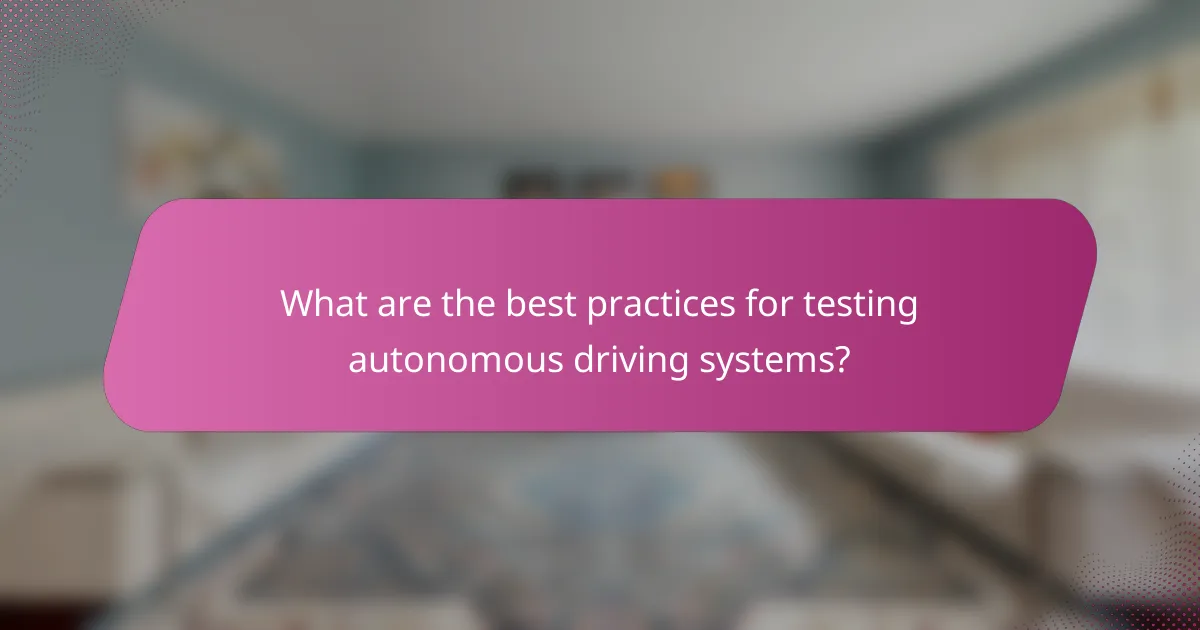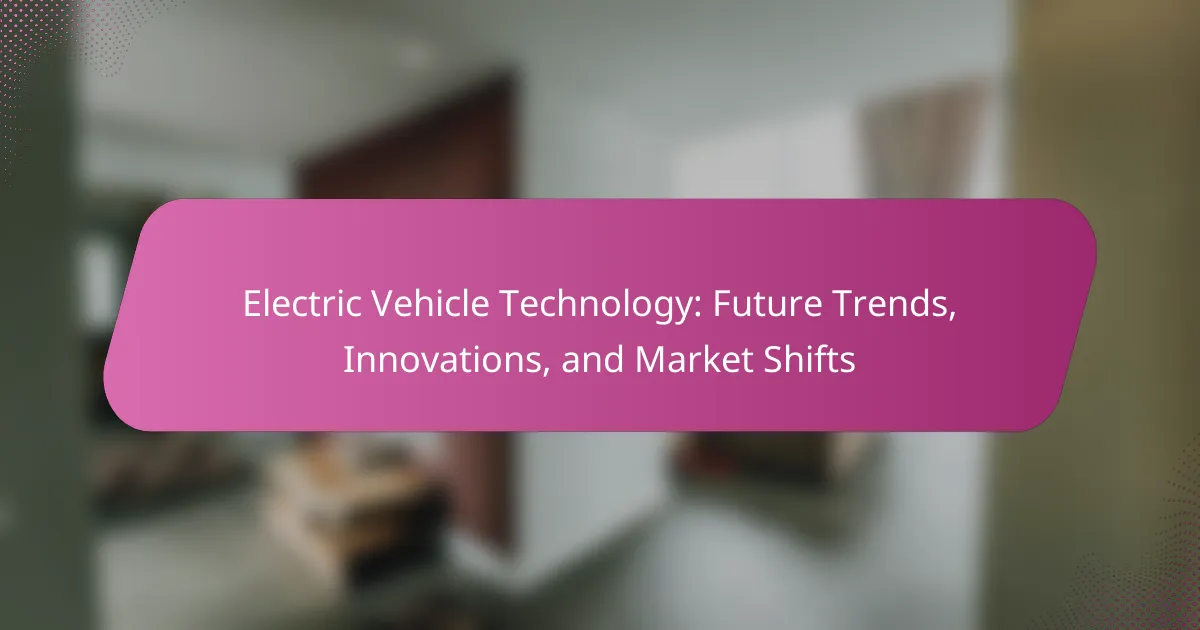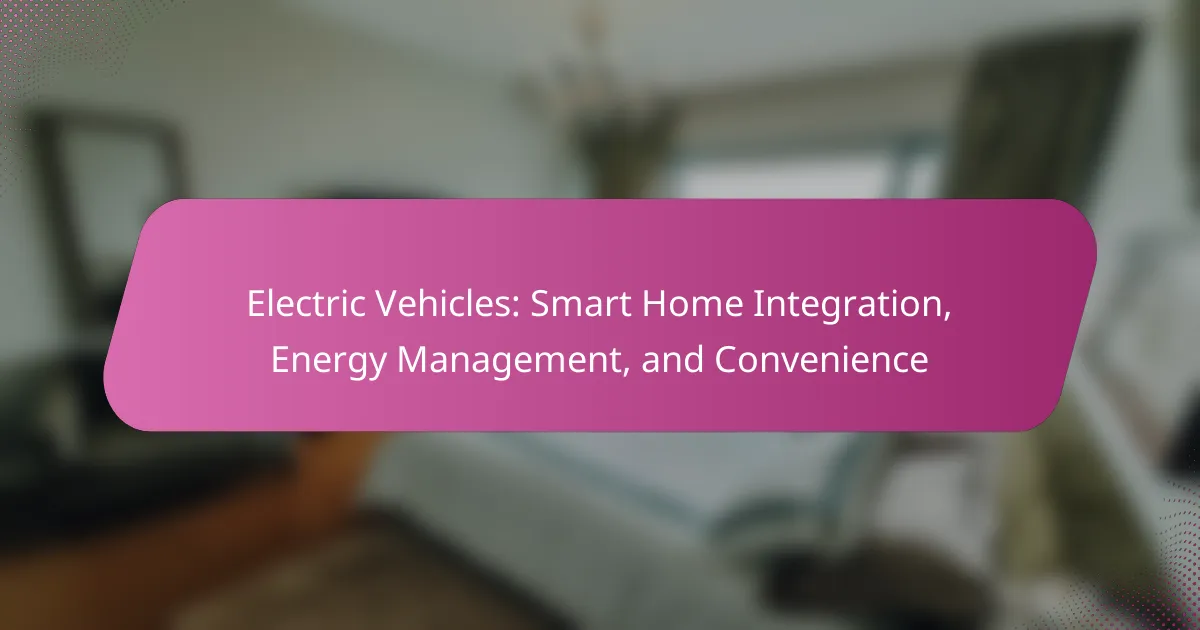Autonomous driving technology is revolutionizing the way we experience transportation by integrating advanced safety features that prevent accidents and enhance driver awareness. By seamlessly managing navigation and driving tasks, these systems not only prioritize safety but also significantly improve user experience, allowing passengers to engage in other activities during their journey. However, achieving effective integration of these technologies poses challenges that must be addressed to ensure reliable performance and communication with the surrounding environment.

What are the key autonomous driving features for safety?
Key autonomous driving features for safety include systems designed to prevent accidents and enhance driver awareness. These technologies work together to monitor the vehicle’s surroundings and assist in making safe driving decisions.
Adaptive Cruise Control
Adaptive Cruise Control (ACC) automatically adjusts a vehicle’s speed to maintain a safe distance from the car ahead. This feature uses sensors to detect the speed and distance of other vehicles, allowing for smooth acceleration and deceleration without driver input.
When engaging ACC, drivers should ensure that they are familiar with the system’s limitations, such as its performance in adverse weather conditions. It’s advisable to remain attentive and ready to take control if necessary, as ACC may not react to all obstacles or sudden changes in traffic.
Automatic Emergency Braking
Automatic Emergency Braking (AEB) is a safety feature that detects potential collisions and applies the brakes if the driver does not respond in time. This system can significantly reduce the severity of an accident or even prevent it altogether.
Drivers should understand that AEB is most effective at lower speeds and in urban environments. Regular maintenance of the vehicle’s sensors is crucial to ensure optimal performance, as dirt or obstructions can impair the system’s ability to function correctly.
Lane Keeping Assistance
Lane Keeping Assistance (LKA) helps drivers stay within their lane by providing steering support or warnings if the vehicle begins to drift. This feature is particularly useful on highways where driver fatigue can be a concern.
While LKA can enhance safety, it is not a substitute for attentive driving. Drivers should periodically check their surroundings and be prepared to regain control, especially in complex driving situations or when road markings are unclear.
Collision Avoidance Systems
Collision Avoidance Systems use a combination of sensors and cameras to detect potential hazards and provide alerts or take action to avoid collisions. These systems can identify pedestrians, cyclists, and other vehicles, enhancing overall road safety.
To maximize the effectiveness of collision avoidance technologies, drivers should familiarize themselves with the specific features of their vehicle. Understanding how these systems operate can help in recognizing their limitations and ensuring they are used appropriately in various driving conditions.

How do autonomous driving features enhance user experience?
Autonomous driving features significantly enhance user experience by providing convenience, safety, and personalized interactions within the vehicle. These technologies allow for a more relaxed journey, enabling drivers and passengers to focus on other activities while the vehicle manages navigation and driving tasks.
Intuitive User Interfaces
Intuitive user interfaces in autonomous vehicles simplify interactions, making it easier for users to access features and information. Touchscreens, voice commands, and gesture controls are commonly used to create a seamless experience. For instance, a driver can adjust settings or navigate through apps with minimal distraction, enhancing overall usability.
Moreover, visual displays often provide real-time feedback on the vehicle’s status, such as speed, navigation routes, and safety alerts. This transparency helps users feel more in control, even when the vehicle is driving itself.
Personalized In-Car Services
Personalized in-car services cater to individual preferences, improving comfort and satisfaction during journeys. Features like customizable seating positions, climate control, and entertainment options allow users to tailor their environment. For example, a vehicle can remember a user’s preferred music playlist or temperature settings, creating a familiar atmosphere.
Additionally, some systems can learn from user behavior over time, suggesting routes or activities based on past preferences. This level of personalization transforms the driving experience into one that feels more like a tailored service.
Seamless Connectivity with Mobile Devices
Seamless connectivity with mobile devices enhances the user experience by integrating smartphones and other gadgets into the vehicle’s ecosystem. Users can easily access navigation apps, music streaming services, and communication tools directly through the car’s interface. This integration allows for a more cohesive experience, reducing the need to switch between devices.
Furthermore, features like Apple CarPlay and Android Auto enable users to mirror their smartphone screens, ensuring that familiar apps are readily available. This connectivity not only keeps users engaged but also enhances safety by minimizing distractions while driving.

What are the integration challenges for autonomous driving technology?
Integration challenges for autonomous driving technology include the need for seamless interaction between various systems, data management complexities, and ensuring reliable communication with external environments. These hurdles must be addressed to enhance safety and user experience in autonomous vehicles.
Data Processing and Management
Data processing and management are critical for autonomous driving, as vehicles generate vast amounts of data from sensors and cameras. Efficient algorithms are required to analyze this data in real-time, often needing to process information within low tens of milliseconds to ensure timely decision-making.
Moreover, managing this data involves not only storage but also ensuring data integrity and security. Companies must comply with regulations regarding data privacy, especially in regions like the EU, where GDPR applies. Implementing robust data management systems can help mitigate risks and enhance performance.
Vehicle-to-Everything (V2X) Communication
Vehicle-to-Everything (V2X) communication is essential for autonomous vehicles to interact with other vehicles, infrastructure, and even pedestrians. This technology enables vehicles to receive real-time information about traffic conditions, accidents, and road hazards, significantly improving safety and efficiency.
Implementing V2X communication requires standardized protocols and infrastructure investment. For example, cities may need to install dedicated short-range communication (DSRC) systems or cellular networks to support these interactions. Proper integration of V2X can lead to smoother traffic flow and reduced accident rates, making it a vital component of autonomous driving technology.

How do regulations impact autonomous driving features in the US?
Regulations significantly shape the development and deployment of autonomous driving features in the United States by establishing safety standards and legal frameworks. These regulations ensure that vehicles meet specific safety criteria and that states can tailor laws to address local needs and concerns.
Federal Safety Standards
Federal safety standards, set by the National Highway Traffic Safety Administration (NHTSA), govern the minimum requirements for vehicle safety, including autonomous systems. These standards cover areas such as crashworthiness, vehicle performance, and the reliability of automated driving technologies.
Manufacturers must demonstrate compliance with these standards before their vehicles can be sold in the US market. For instance, they may need to provide data on how their autonomous systems respond in various driving conditions, ensuring that safety is prioritized in the design and functionality of these vehicles.
State-Specific Legislation
In addition to federal regulations, individual states have the authority to enact their own laws regarding autonomous vehicles. This can lead to a patchwork of regulations, where some states may allow fully autonomous vehicles on public roads while others impose restrictions or require a human driver to be present.
For example, states like California and Arizona have developed comprehensive frameworks for testing and deploying autonomous vehicles, including specific licensing requirements for companies. In contrast, other states may have more stringent regulations that could slow down the adoption of these technologies.

What are the best practices for testing autonomous driving systems?
The best practices for testing autonomous driving systems include a combination of simulation testing and real-world pilot programs. These methods ensure comprehensive evaluation of the technology under various scenarios and conditions.
Simulation Testing
Simulation testing involves creating virtual environments to assess the performance of autonomous driving systems. This method allows developers to test a wide range of scenarios, including rare events that may be difficult to replicate in real life.
Key considerations for simulation testing include the fidelity of the models used and the diversity of scenarios. High-quality simulations can help identify potential issues early in the development process, reducing the need for extensive real-world testing.
Common pitfalls include over-reliance on simulations without validating results through real-world data. It’s essential to balance simulation with practical testing to ensure the system performs reliably in actual driving conditions.
Real-World Pilot Programs
Real-world pilot programs involve deploying autonomous vehicles in controlled environments or designated areas to gather data on their performance. These programs help validate the findings from simulation testing and provide insights into how the systems interact with real-world variables.
When conducting pilot programs, it’s crucial to select diverse locations and conditions to test the system’s adaptability. Considerations should include urban versus rural settings, varying weather conditions, and different traffic patterns.
Safety regulations and local laws must be adhered to during these pilot programs. Engaging with local authorities and communities can facilitate smoother implementation and help address any concerns regarding safety and public acceptance.

How do manufacturers ensure safety in autonomous vehicles?
Manufacturers ensure safety in autonomous vehicles through a combination of advanced technology, rigorous testing, and adherence to industry standards. These vehicles are designed with multiple layers of safety features that work together to minimize risks and enhance reliability.
Robust Sensor Technology
Robust sensor technology is crucial for the safety of autonomous vehicles. These vehicles typically utilize a variety of sensors, including LiDAR, radar, and cameras, to perceive their environment accurately. Each sensor type has its strengths; for instance, LiDAR provides precise distance measurements, while radar excels in detecting objects in adverse weather conditions.
Manufacturers often implement sensor fusion, which combines data from multiple sensors to create a comprehensive view of the surroundings. This approach helps to reduce blind spots and improve decision-making capabilities. For example, if a camera detects a pedestrian, radar can confirm the object’s speed and trajectory, enhancing the vehicle’s response time.
Regular calibration and maintenance of these sensors are essential to ensure optimal performance. Manufacturers typically recommend routine checks and software updates to address any potential issues, helping to maintain safety standards throughout the vehicle’s lifecycle.



